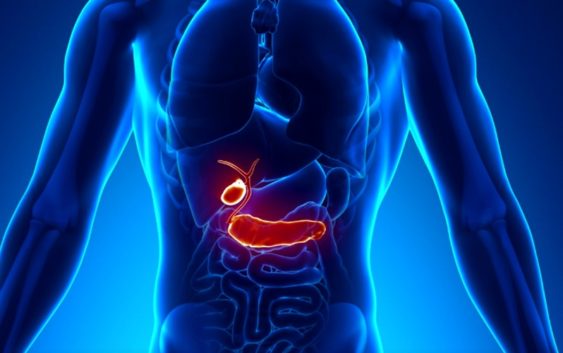The Pancreas

When you make a food choice, it is likely to be because of how it looks, smells and tastes. If you knew what happened to your digestive system each time you ate certain foods, you may change your eating habits.
These days everyone is talking about sugar. In fact some say that it is as dangerous to your health as tobacco. Both substances can cause very serious diseases if consumed on a regular basis.
The pancreas is an organ in the digestive and endocrine system. It is located behind the stomach and sits close to the duodenum in the abdominal cavity. It produces several important hormones two of which are insulin and glycogen. Both circulate in the blood.
The pancreas also secretes juices; lipase (fat digestion), amylase (starch digestion) and trypsin (protein digestion), all of which help the digestion of proteins and fat nutrients into the small intestine. It is important to keep it functioning at its optimum level by controlling the amount of sugar you eat each day.
The pancreas plays an important role with sugar control and metabolism within the body. Insulin is a hormone secreted by specialised cells in the pancreas known as the Islets of Langerhans. It regulates blood sugar level.
When we eat, the blood sugar level rises. The sugar in the blood is in the form of glucose. Insulin helps cells absorb any excess glucose into glycogen, an insoluble sugar which is stored in the liver until the body needs it. Thus the blood sugar level drops.
Now you can begin to understand how all these important little cells move around your body!
The 3 million cell clusters in the pancreas are called pancreatic islets. Within these islets there are four types of cells that help with the regulation of blood glucose levels. Each cell secretes a different type of hormone:
- Alpha cells secrete glucagon
- Beta cells secrete insulin
- Delta cells secrete somatostatin
- Gamma cells secrete pancreatic polypeptide
Glucagon is a hormone produced by the pancreas that, along with insulin, controls the level of glucose in the blood. Glucagon has the opposite effect of insulin, as it increases the glucose levels in blood.
The pancreatic islets are crisscrossed by a dense network of capillaries, which are lined by layers of islet cells of which most are in direct contact with blood vessels.
Too much sugar overloads the Pancreas’ natural ability to create the right amount of insulin and glucagon. If you eat too much sugar at one time, your pancreas will create insulin without too much trouble. However, if you eat too much sugar on a regular basis, the long-term wear on your pancreas may cause it to “age” more rapidly than the rest of your body. This can ultimately result in pancreatic failure, which is another way of saying “diabetes.”
The pancreas controls sugar. But remember that if you continue to ignore the amount of sugar you eat, your brain also overrides messages received from the pancreas to tell you to stop eating.
Your brain plays a vital role in the digestive process too.
Activity of the cells in the pancreatic islets is affected by the autonomic nervous system.
The sympathetic nervous system is activated under conditions of stress (fight-or-flight response).
When stimulated it increases heart rate, constricts blood vessels and raises blood pressure. It also regulates the function of the sweat glands and stimulates the secretion of glucose in the liver.
The parasympathetic nervous system is responsible for stimulation of “rest-and-digest” activities that occur when the body is at rest, especially after eating (including digestion). It compliments the sympathetic nervous system and ideally we want to achieve ‘homeostasis’ where our internal systems remain stable and relatively constant.
Aside from the emotional activity, the pancreas also works hard to assist the other digestive organs to break down food. It secretes fluid that contains enzymes into the duodenum, which helps break down carbohydrates, proteins and lipids (fats). This role is called “exocrine”.
Further information on how much sugar can be found in some of your favourite meals can be found on our fact sheets.
Remember sugar is hidden in all types of foods and is also found in many alcoholic and non-alcoholic drinks!
